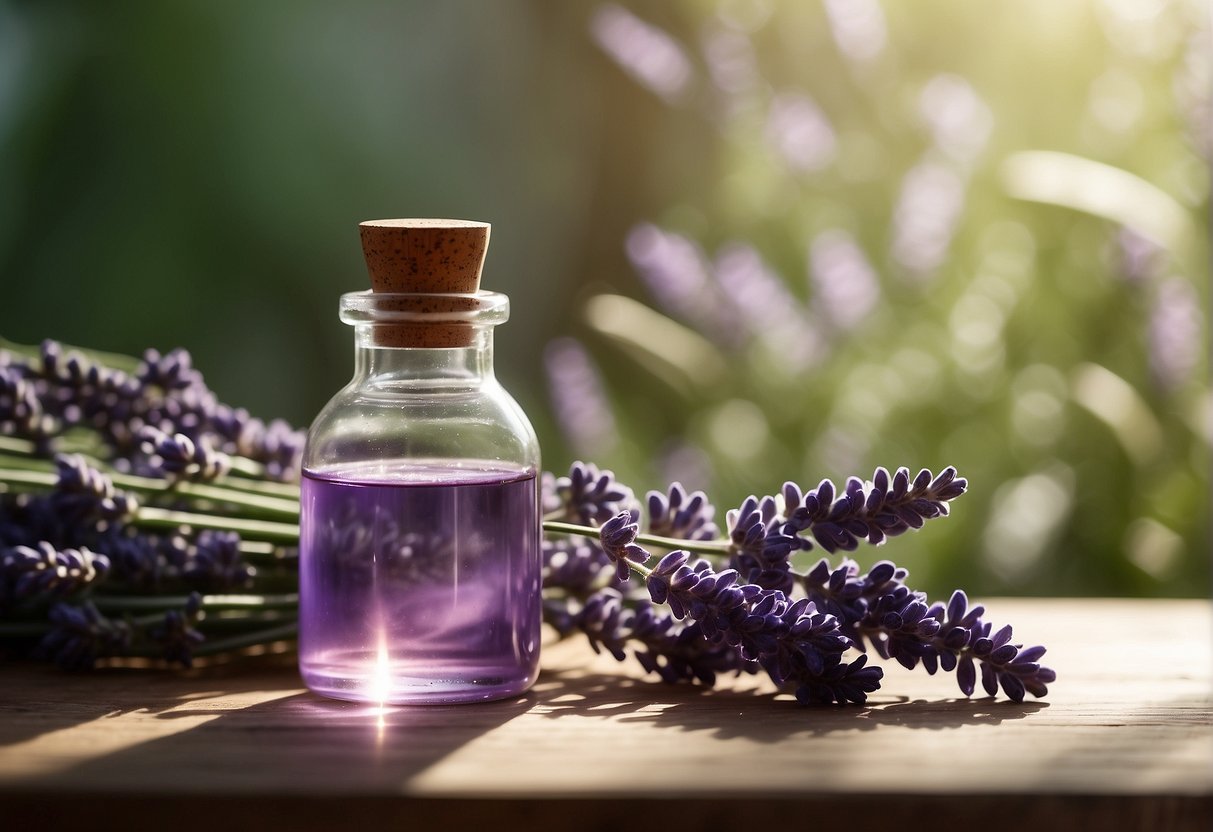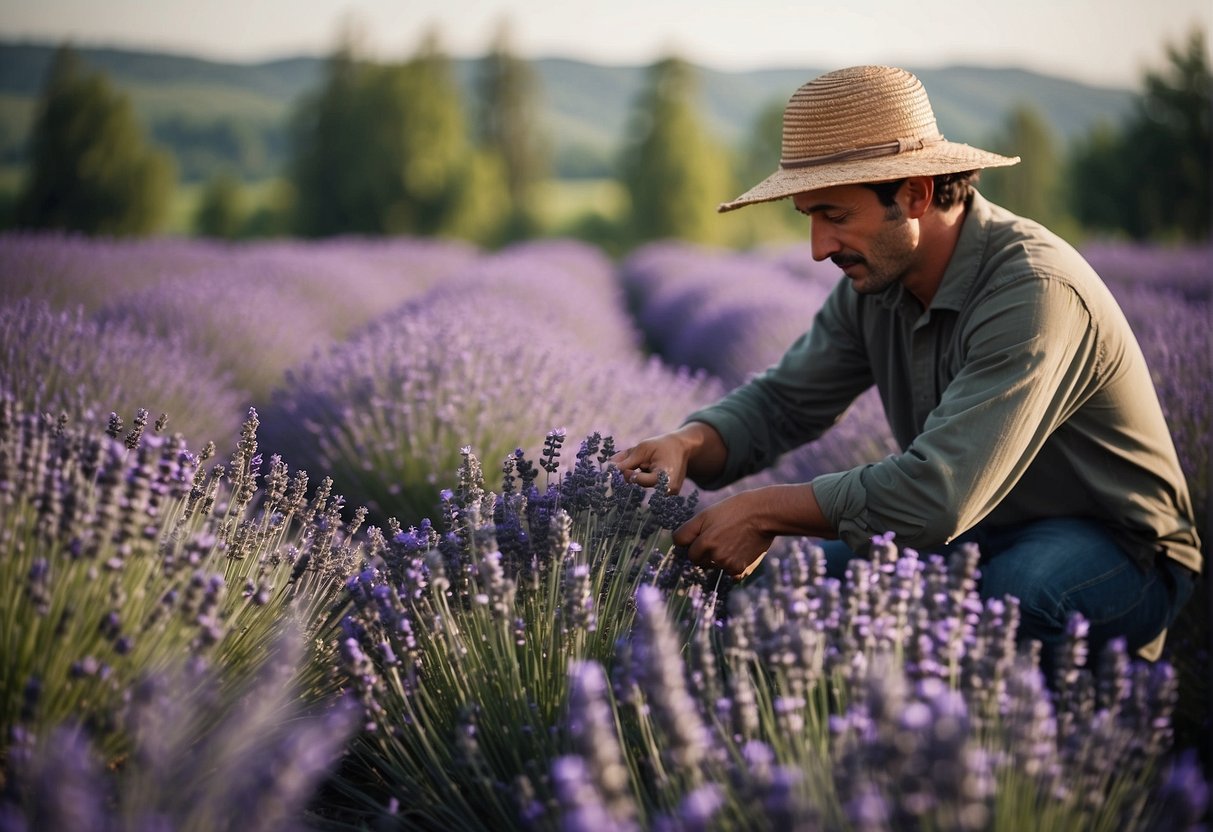Lavender Oil Benefits
Unveiling Its Therapeutic Effects
By steam distilling lavender flowers, lavender oil is a highly versatile essential oil. Its relaxing fragrance has made it a popular ingredient in aromatherapy and personal care products. Lavender oil dates back to ancient times, when civilizations like the Egyptians and Romans utilized it for washing, cooking, and preserving.

Lavender oil has long been known for its medicinal benefits. Its applications range from encouraging relaxation to helping soothe skin irritations. Good-quality lavender oil has a variety of active components that can provide antioxidant protection while also enhancing mood and sleep. As its applications have expanded, safety and application criteria have been more precise, ensuring that people reap the health advantages while limiting hazards.
Key Takeaways
- Lavender oil is derived from the lavender plant and has historical significance in various cultures.
- It is widely used for its potential therapeutic effects, like promoting relaxation and skin healing.
- Proper usage and dilution of lavender oil are essential for safe and effective application.
Origins and Extraction

Lavender essential oil comes from the lavender plant, which is well-known for its aromatic characteristics and long history of use in aromatherapy. The oil's purity and medicinal efficacy are mainly dependent on its extraction from the plant's characteristic flower spikes.
Plant Characteristics
The lavender plant (Lavandula) is a perennial and evergreen herb with purple flower spikes valued for their scent and medicinal benefits. It thrives in sunny, rocky areas found throughout the Mediterranean region, Europe, and northern Africa. The plant produces an essential oil rich in active chemicals, including linalool, a monoterpene alcohol that is primarily responsible for lavender's relaxing scent and potential health benefits.
Extraction Methods
To obtain lavender essential oil, two primary methods are utilized: distillation and steam distillation.
-
Distillation: The plant's flower spikes are subjected to distillation, a process involving the passage of water or steam through the plant material to vaporize the volatile compounds, which then condense back into liquid form upon cooling.
-
Steam Distillation: This preferred method applies steam, carefully penetrating the plant tissues to liberate the essential oils without destroying delicate compounds. Upon cooling, the mixture separates into water and oil, with lavender essential oil being collected and stored.
This painstakingly managed extraction method is critical for preserving the essential oil's integrity and ensuring it contains the maximum amount of medicinal ingredients.
Therapeutic Uses and Benefits

Lavender oil is valued for its diverse therapeutic purposes. It is well-known for its relaxing powers, which have made it a mainstay in aromatherapy, but its anti-inflammatory and sedative properties also make it useful for skin care, sleep, and anxiety management.
Aromatherapy and Relaxation
The soothing perfume of lavender oil is used in aromatherapy to reduce tension and produce a sense of calm and relaxation. Inhaling lavender oil can help relieve anxiety in a variety of contexts, including dental offices and intensive care units. It is also utilized in massage to improve the relaxation process.
Skin Care and Healing
As a skin care therapy, lavender oil's anti-inflammatory and healing characteristics help to soothe minor burns, wounds, and skin irritations. It can be administered topically to relieve discomfort and speed up the healing process, making it an effective natural therapy for skin healing.
Sleep Aid and Anxiety Management
Lavender oil is frequently recommended as a natural sleep aid for treating insomnia and improving sleep quality. A few drops on the pillow or in a diffuser can help you drift off more easily. Furthermore, studies have shown that oral supplementation with lavender oil can be as helpful as other drugs for anxiety treatment.
Application and Safety

Lavender oil is valued for its flexibility and several uses in cosmetics and aromatherapy. It is critical to use it correctly to guarantee safety and effectiveness.
Proper Usage and Dosage
To reduce the risk of skin irritation, lavender oil should always be diluted with a carrier oil before use. A standard guideline for topical treatment is a 1-2% lavender oil-to-carrier oil dilution ratio, which amounts to around 6 drops of lavender oil per ounce of carrier oil. It is critical to follow the specified dosage, as excessive use might lead to toxicity. Before beginning any new treatment with lavender oil, visit a doctor, especially if the patient is an infant, pregnant, or has an underlying health issue.
Potential Side Effects and Precautions
Some people may experience bad responses while using lavender oil topically, such as contact dermatitis or an allergic reaction. Itching, redness, or swelling are all symptoms of an allergic reaction and should be treated as such. To assure safety, it is recommended that a patch test be performed before widespread use. Lavender oil should be consumed with caution, since incorrect internal use can be dangerous. Always follow professional guidance to avoid unpleasant consequences.
Integrations and Combinations

Lavender oil, formally known as Lavandula angustifolia, is extremely versatile and can be combined or integrated with a wide range of substances, including other essential oils and culinary components. Its versatility, particularly when used in diffusers or blended for topical treatments, is highly acclaimed.
Compatible Essential Oils
Lavender oil is compatible with a wide range of essential oils, which can increase its aroma and medicinal benefits. Lavender oil and peppermint oil mix to provide a pleasant and relaxing aroma that is great for relaxation.
- Citrus Oils: Blending with citrus oils such as lemon or grapefruit offers an uplifting aroma.
- Herbaceous Oils: Rosemary and thyme can contribute to a more grounded and invigorating blend.
- Woody Oils: Cedarwood and sandalwood add depth to lavender's floral notes.
Carrier oils such as coconut oil and jojoba oil are also vital to these combinations, especially for diluting essential oils before topical application. They act as a base, allowing for a more comfortable and safe skin application in products like lotions and soaps.
Culinary Uses
Lavender oil can also be used in the kitchen, though caution is advised due to its intensity. When used sparingly, it adds a distinct flavor to foods and is featured in some teas as an element that improves both taste and aromatherapy.
- Tea: Lavender-infused tea is a popular beverage known for its calming effect.
- Cooking: A few drops of lavender oil can be blended with coconut oil or jojoba oil to create a unique flavor for baked goods or desserts.
Due to the strong flavor profile of lavender oil, it is critical to utilize food-grade essential oils and begin with a small amount when cooking with them. The steam diffusion method of cooking with lavender oil is discouraged due to the likelihood of uneven flavor dispersion.
Frequently Asked Questions

Lavender oil is well-known for its flexibility in treating a wide range of skin and hair issues, encouraging healing, and providing relaxation through aromatherapy. The following are some frequently asked questions concerning its applications and advantages:.
What are the benefits of using lavender oil on the skin?
Lavender oil has anti-inflammatory and antibacterial qualities that can relieve minor skin irritations and blemishes. When applied to the skin, it has been shown to produce relaxation and improve sleep.
How can lavender oil be used for hair care?
When used in hair care, lavender oil may increase hair growth, eliminate dandruff, and soothe scalp irritation. Its aroma delivers a relaxing sensation during hair treatments.
What precautions should be taken when using lavender oil?
To avoid skin sensitivity, dilute lavender oil with a carrier oil first. A patch test is indicated to rule out allergic reactions. Pregnant or nursing women should consult a healthcare practitioner before using.
In what ways does lavender oil contribute to healing?
Its soothing properties may aid in healing minor burns, cuts, and insect bites by providing antimicrobial protection and supporting the body's natural healing process.
How should lavender oil be applied for maximum benefit?
To maximize its advantages, lavender oil should be applied topically after proper dilution or diffused for aromatherapy. Consistent application as part of a daily regimen can improve its efficacy.
What are the different uses of lavender oil in aromatherapy?
In aromatherapy, lavender oil is used to reduce tension, induce sleep, improve mood, and create an overall sense of well-being. Its relaxing perfume makes it a popular choice in aromatherapy.



